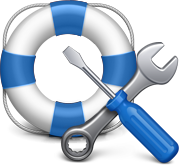Six Best Remote Work Strategies
Remote Work Strategy in Action
If you have remote workers, then how you manage your business and employees has, and will continue to change. We often talk about the technology that makes remote work efficient and that can help integrate teams. But supporting remote workers requires a broader perspective and understanding of the workplace. As employers, we remain responsible for providing a safe, effective workplace regardless of where our employees work. Here a few considerations as you plan your hybrid business and remote work strategy.
If you have remote workers, then you should consider the following six best practices for a remote work strategy.
Six of The Best Remote Work Strategies
- Are responsible for their work environments, including the same health and safety regulations that apply in the office.
- Ensuring safe and appropriate workspace ergonomics, sound levels, lighting, etc. are responsibilities of the employer.
- Provide your remote workforce with appropriate furniture, lighting, and ergonomic tools.
- And yes, an employee working from home might be eligible for Workers’ Compensation if they trip over their dog while working.
- Need to accurately track and manage working hours for non-exempt employees.
- Avoid wage and employment related liabilities by ensuring hourly workers are compensated for all work time, including when they respond to the random off-hours email.
- Setting clear policies and expectations can help avoid work hour, wage, and employment issues.
- Are responsible for ensuring their work is secure.
- Remote work environments must be managed and secured to the same levels as those working in the office.
- Data privacy regulations, such as HIPAA, PCI, and SEC17, do not end at the office door.
- Networks, systems, applications, and data require the same levels of protection regardless of location.
- Similarly, physical protections must be in place for printed documents.
- Can be accountable for intellectual property stored on personal devices.
- Establish a clear policy and procedures for the use of personal devices for work.
- Include the need for the company to install software or productivity tools to manage the business’ information on the device, including but not limited to cyber protections, personal/work data separation, local encryption, backup/recovery, and the ability to remotely remove work related data in an emergency.
- Want to avoid “in-person” bias.
- Remote workers need mechanisms and unified communication options to participate in the informal conversations and interactions we take for granted when working in an office environment.
- Supervisors and managers should help workers establish and build effective relationships, including those that offer mentorship and guidance, with direct co-workers and others in your firm.
- Measures of performance should, explicitly, avoid the implicit bias that in-person visibility correlates to better involvement and teamwork.
- Should understand the tax implications for your business, and employees related to working remote.
- Having employees in other tax jurisdictions can make proper payroll tax withholding and filing more complex.
- States may or may not have reciprocal agreements and some states are imposing new rules.
- Remote workers may create nexus in some jurisdictions, triggering sales tax and other tax obligations.
- Work with your attorney and financial advisors to understand your requirements and to ensure compliance.
Next Steps to Create a Remote Work Strategy
Cloud infrastructure technologies help facilitate remote work and hybrid work environments. You can deploy systems, apps, and tools to make remote and hybrid work efficient and secure. Remote and hybrid work models, however, span every aspect of your business. Policies, procedures, operations, and culture all require attention, planning, and support.
Work with your legal and financial advisors, and your HR resources, to ensure your remote/hybrid plans will benefit your business.


